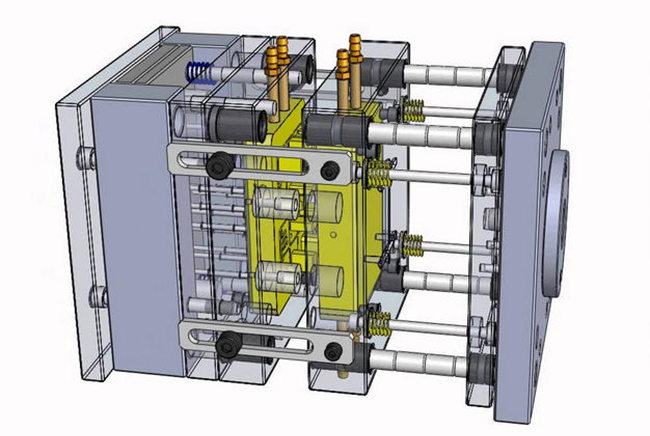The die-casting mold consists of two parts, the covering part and the movable part. The part where they are combined is called the parting line. In hot chamber die casting, the cover part has a gate, while in cold chamber die casting it is an injection port. From here, the molten metal enters the mold. This area is shaped to match the injection nozzle in hot chamber die casting or the injection chamber in cold chamber die casting. The movable part usually includes a push rod and a runner. The so-called runner is the channel between the gate and the mold cavity, through which the molten metal enters the mold cavity. The cover part is usually attached to the fixed platen or front platen, while the movable part is attached to the movable platen. The mold cavity is divided into two cavity inserts, which are separate components that can be relatively easily removed or installed from the mold with bolts.

The mold is specially designed so that the casting remains within the moving parts when the mold is opened. In this way, the push rod of the movable part will push the casting out. The push rod is usually driven by the pressure plate, which will accurately drive all push rods at the same time with the same amount of force, so as to ensure that the casting is not damaged. When the casting is pushed out, the pressure plate shrinks and retracts all the push rods to prepare for the next die casting. Since the casting is still in a high temperature state when it is demoulded, only a large enough number of push rods can ensure that the average pressure on each push rod is small enough to avoid damaging the casting. However, the push rod will still leave marks, so it must be carefully designed so that the position of the push rod does not have too much impact on the operation of the casting.
Other parts in the mold include core slides, etc. Cores are components used to create holes or openings in castings. They can also be used to add detail to a casting. There are three main types of cores: fixed, movable and loose. Fixed cores are oriented parallel to the direction in which the casting exits the mold. They are either fixed or permanently attached to the mold. The movable core can be arranged in any direction except the ejection direction. Before opening the mold after the casting is solidified, the movable core must be taken out of the mold cavity using a separation device. The slider is very close to the movable core. The biggest difference is that the slider can be used to create undercut surfaces. Using cores and slides in die casting significantly increases costs. Loose cores, also known as takeout blocks, can be used to create complex surfaces such as threaded holes. Before each cycle begins, the slider needs to be manually installed and finally pushed out together with the casting. Then remove the loose core. Loose cores are the most expensive cores because they are labor-intensive to make and they increase cycle time.
The discharge port is usually thin and long (approximately 0.13 mm) so the molten metal can cool quickly reducing waste. There is no need to use a riser in the die-casting process because the molten metal has a high pressure and can ensure a continuous flow from the gate into the mold.
Due to the relationship between temperature, the most important material properties for molds are thermal shock resistance and softness. Other characteristics include hardenability, machinability, thermal crack resistance, weldability, and usability (especially for large molds) and cost. Mold life is directly dependent on the temperature of the molten metal and the time of each cycle. Molds used for die casting are usually made of hard tool steel. Because cast iron cannot withstand the huge internal pressure, the molds are expensive, which also results in high mold opening costs. Metals die-cast at higher temperatures require the use of harder steel alloys.

